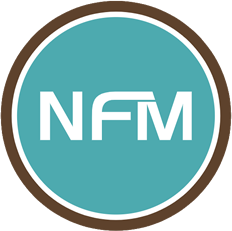If you watched our video “How to Get Community-Wide Fundraising Support: Beyond Our Walls,” you already know this: sustainable community work needs community-wide funding.
And that means getting more than just your regular church members involved. It means connecting with folks who live down the street, own a business around the corner, and care about the same kids, neighborhoods, and futures you do.
But here’s what I hear all the time:
“I don’t know how to approach businesses. I don’t want to seem like I’m begging.”
Or worse—“We emailed five restaurants once and didn’t hear back, so we stopped.”
Listen… I get it. Nobody wants to cold call strangers and pitch a donation. I wouldn’t want to do that either.
But what if I told you there’s a better way? A way that feels more like building relationships than asking for favors?
Let me break it down.
1. Start With the Ones Already in Your Circle
You don’t need to start with the Chamber of Commerce or chase the biggest name in town. Start small and start smart.
Ask yourself:
- Where do your members work?
- Who owns the barbershop your board member goes to every week?
- What businesses are already sending volunteers to your programs?
You probably have three to five connections right now that you’re not leveraging. And I’m not talking about a giant check — I’m talking about partnership.
Example: One of the churches I worked with got their youth mentorship program funded by a local gym. You know how that started? One of their deacons trained there. That’s it. They mentioned the program during a workout, the owner asked to learn more, and the church ended up with monthly support plus free gym time for youth participants.
It didn’t come from a cold email. It came from real connection.
2. Lead With Impact — Not Just a Budget
Too many churches reach out to businesses saying, “Can you donate $500 to our food program?”
But here’s what lands better:
“We’re feeding 60 families every week. With $500, we could add 10 more. Would you consider helping us close that gap?”
See the difference? One is an expense. The other is an invitation to make a difference in their own community.
When you talk to a business, show them how their support will:
- Directly benefit people they live and work around
- Make them part of a solution
- Give them a meaningful way to show up for the community
Local business owners are humans first. And most of them genuinely want to help — they just need to see how.
3. Make It Easy (and Worth It) for Them to Say Yes
This one is key. Don’t just ask for money — offer something meaningful in return. That could look like:
- Featuring them in your church newsletter or on social media
- Adding their logo to event signage
- Inviting them to community events or volunteer days
- Letting them speak at a youth workshop or networking event
These aren’t transactional gimmicks. They’re ways to make the partnership feel mutual and valued. And they build long-term relationships, not one-off donations.
Oh — and make sure it’s easy to give. No clunky forms. No confusing steps. If they say, “Yes,” you better have a clean link or a fast follow-up.
4. Use Salons to Open Doors (Yes, They Still Work)
One of the most effective (and underrated) tools I’ve used is the small group gathering — or as we call it, a salon.
Here’s how it works:
- You host a gathering at someone’s home or business
- You invite 10–15 people who care about the community
- You share a story, a goal, and a clear next step to get involved
No pressure. No ask-heavy script. Just real talk and connection.
And here’s the kicker — ask a business owner to co-host. Let them open the space, welcome folks, and feel like part of the mission. That partnership will stick.
We go into this deeper in our video Where to Find 200 Donors in 12 Minutes, and I promise — it’s worth your time.
5. Follow Up Like It Matters (Because It Does)
If someone gives you their time, their money, or even just interest — follow up. Don’t let the trail go cold.
Send:
- A thank you text or video
- A brief update about how their support helped
- A link to a story or photo they can feel proud of
That’s how you go from a one-time gift to a trusted partner.
I had a church that forgot to follow up after a business gave $1,000. That same business gave $5,000 to a different nonprofit the following month. Why? Because they were the ones who followed up and showed the impact.
The Bottom Line:
You don’t need cold calls.
You don’t need to chase strangers.
You just need a smarter way to engage the folks already near you.
Local businesses aren’t out of reach—they’re right around the corner. But turning them into supporters takes clarity, consistency, and the right approach.
That’s exactly what I’ll show you in our free webinar: Asking for a Gift: A Step-by-Step Guide to Individual Donor Support.
You’ll learn how to:
- Identify a project that businesses want to support
- Build real partnerships (without begging)
- Ask in a way that feels confident and clear
Click here to register now and start building a funding strategy that goes beyond the pews.
